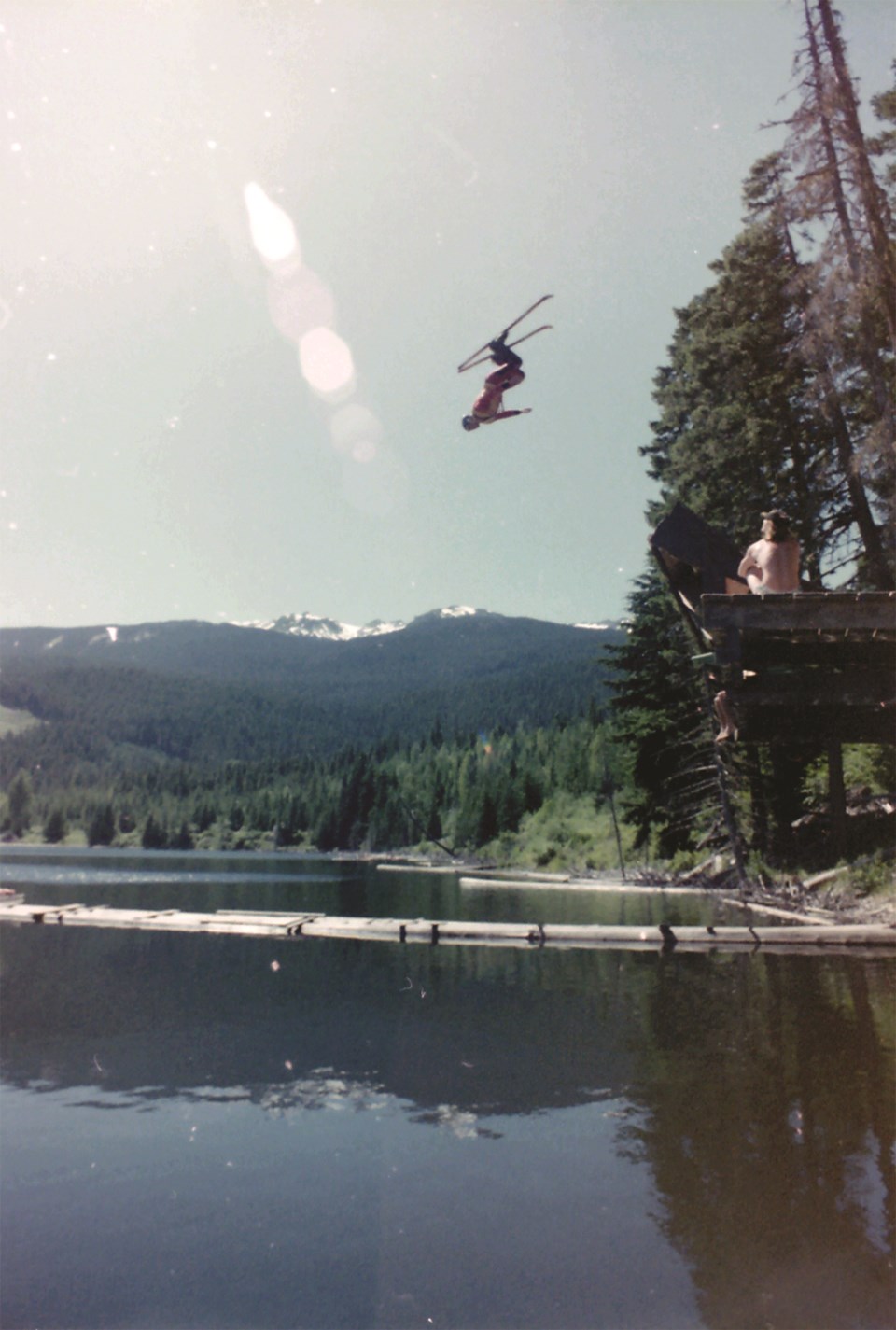In the late 1970s, there were two very different ways to ski in Whistler during the summertime: on the snow of the Whistler Glacier with the Toni Sailer Summer Ski Camps (TSSSC) and into the water from the Lost Lake ski jump. Both got their start as a way for skiers to train through the summer months, though they also attracted recreational skiers looking to learn something new.
The first TSSSC was held in 1966, headed by Austrian alpine ski racer Toni Sailer. At the time, Whistler’s Glacier Bowl was one of the only year-round snowfields in Canada easily accessible by lifts, meaning camp participants didn’t have to rely on helicopters or hiking at the beginning and end of each day with their ski gear on their backs.
The programming was largely driven by the need for competitive alpine racers to stay in shape and improve their techniques between competition seasons, but the camps were popular with both competitive and recreational skiers. Over the years they expanded to include camps for kids and instruction in novice and intermediate racing, recreational skiing, and, in 1973, freestyle skiing under the tutelage of Wayne Wong, George Askevold, and Floyd Wilkie.
By 1977, however, freestyle skiers in Whistler had grown frustrated at the lack of summer aerial opportunities offered by the Whistler Mountain camps and began planning for their own ski jump in the valley. This desire was made more challenging since neither the newly created Resort Municipality of Whistler nor the Squamish-Lillooet Regional District would give a development permit, nor any official permission for a ski jump. Undeterred, the group scoped out a location for the jump in an inconspicuous, out-of-the-way site—on the shores of Lost Lake.
The ski jump also had no funding. The timber was scrounged from a number of sources, and the plastic grass ski-out from the Olive Chair was taken from the dump and given a new life as the ski jump’s surface. Construction progressed quickly once the materials were gathered, taking only a couple of weeks.
When finished, the ramp projected out six metres over the lake and willing skiers could launch themselves into the air up to 12 metres above the water. According to Dave Lalik, one of the original workers on the ramp, “Injuries were commonplace but [an] acceptable risk in the sport and environment of the day.”
Spectators were common, often watching from the water.
In 1981, the ski jump began hosting competitions and the first Summer Air Camp at Lost Lake was held in 1982, drawing freestyle skiers to Whistler to train with the national team coach Peter Judge. Far from remaining an inconspicuous site, the Lost Lake Ski Jump could be seen in television broadcasts as film crews arrived to record events.
Neither Whistler Mountain nor Lost Lake offer opportunities for summer skiing today. Summer ski camps ended on Whistler Mountain in the late 1990s due to the receding glacier and low summer snow levels and, and as Lost Lake became less and less lost and more developed, the ski jump was taken down and the site was incorporated as part of Lost Lake Park.




